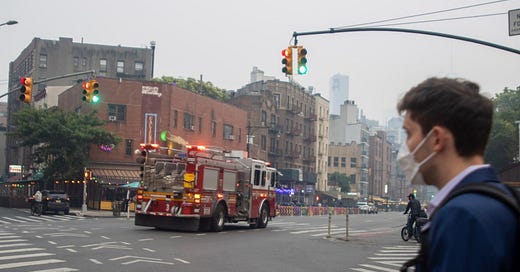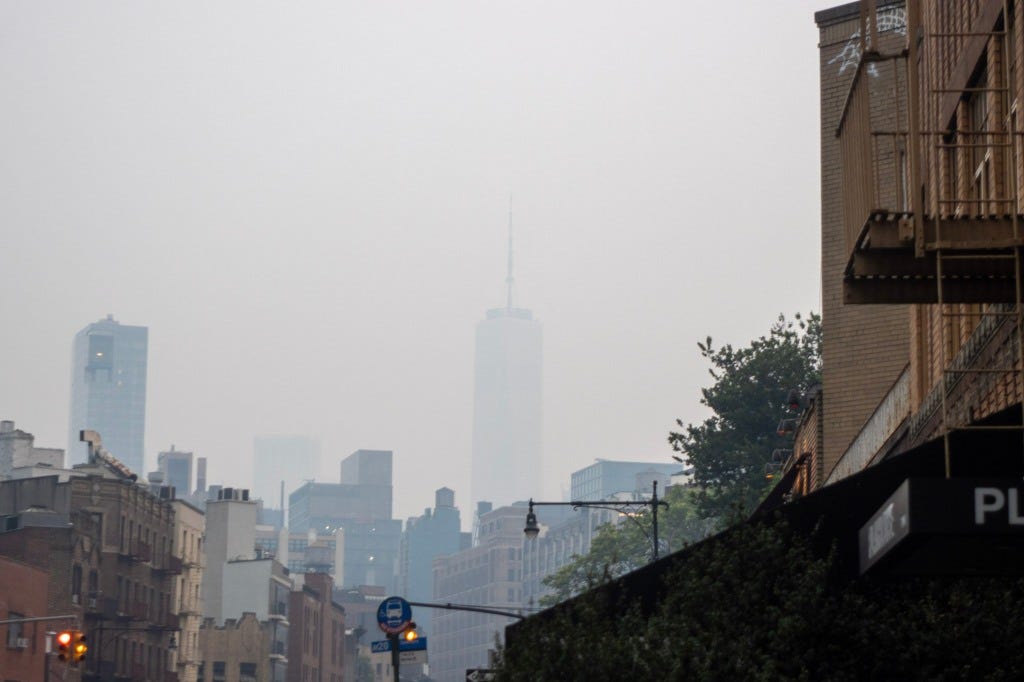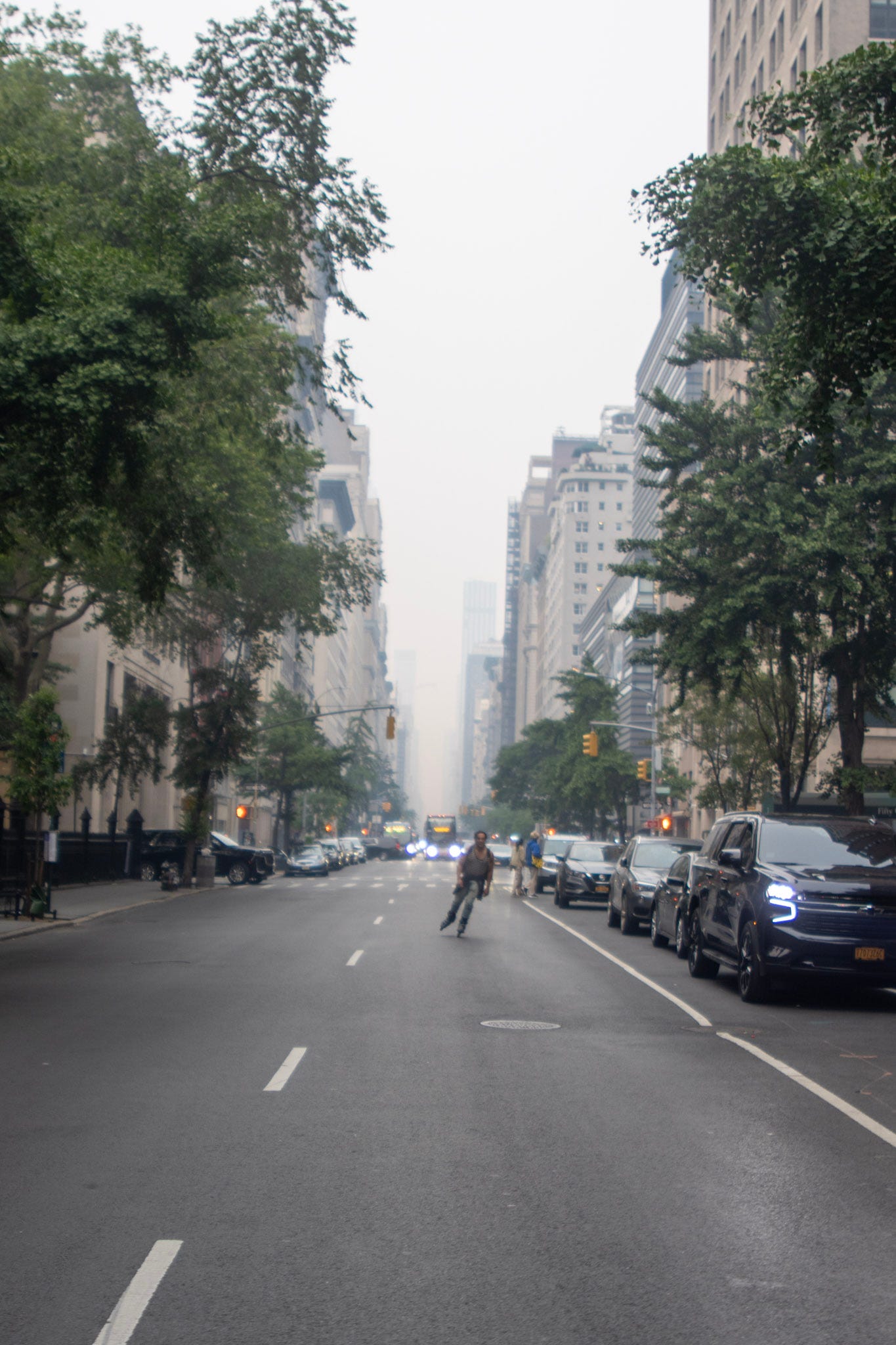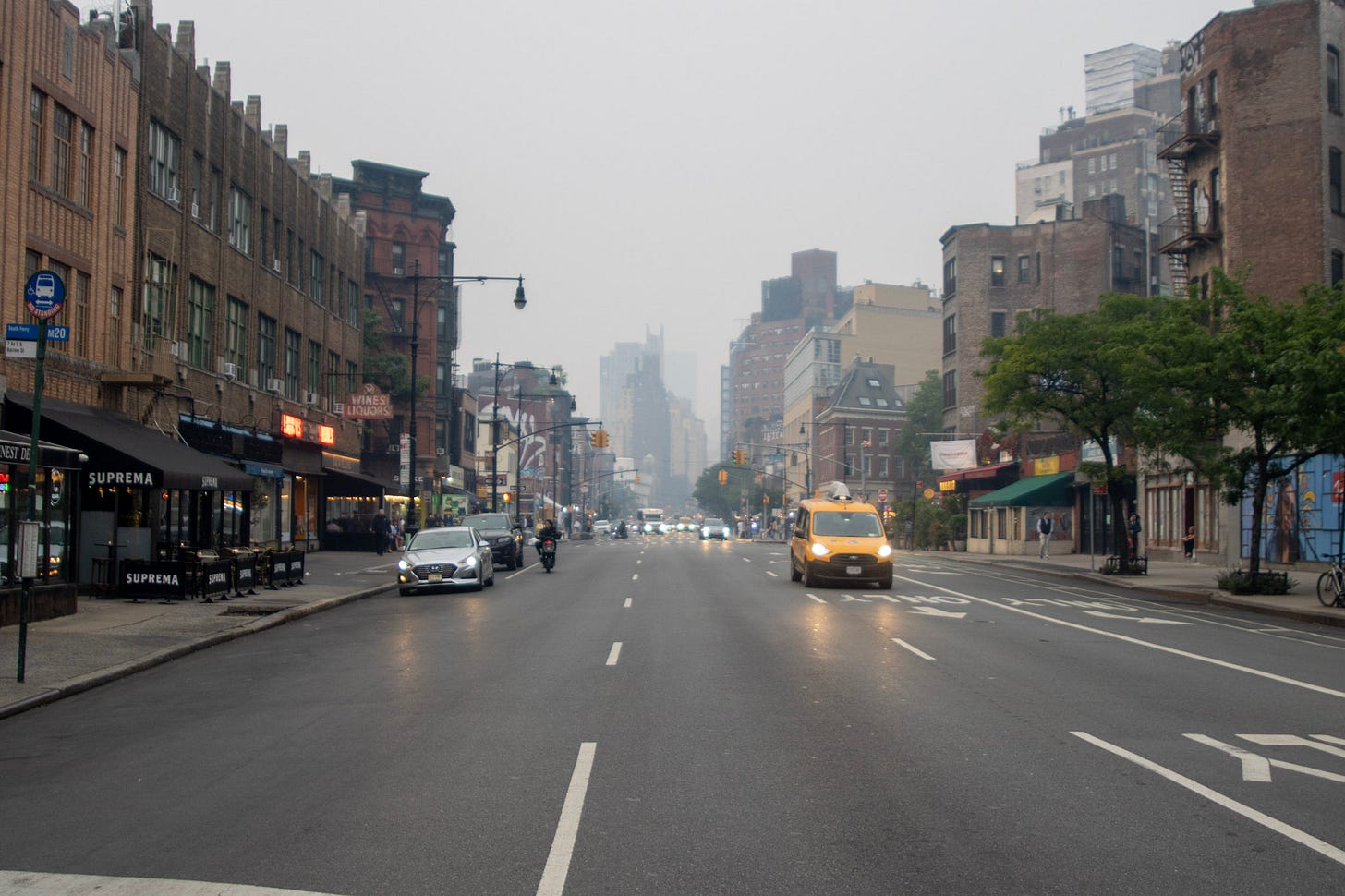NYC: Worst Air Quality on the Planet
Walking around the city with the worst air quality in the world.
A layer of smoke lays over the New York City skyline. Where I once was able to walk out my building’s door and see the entirety of the Empire State Building, now it is a faint outline only a few shades darker than the sky surrounding it.
The city officials had warned New Yorkers that being outside for three hours was equivalent to smoking six cigarettes. Tabia and I had been in class for eight hours, and then sitting in the library for four after that, staring at Adobe. We bound our heads together and decided that since neither one of us had smoked a cigarette before, we had more leeway with the air quality. So we slung our respective cameras around our necks, bought a $1 disposable face mask from the vending machine in the lobby, and started our walk around the city.
There was this inherent sense as we walked the city blocks that triggered a sort of deja vu that brought a sense of dread along with it. The city was not as crowded as usual and the people who were out on the streets hurriedly made their way home while covering their face with a mask. They were supposed to make commuting outside a tad bit better for you, but instead it instilled a higher sense of dread into the people looking onwards. There was an erriness to the city because of the fog, but also because these were scenes that we had seen before. People rushing from one destination to another, hiding their faces behind masks, and a sense of unknown as to when the smoke would lift and this would all be over.
A pair of drunk boys joked with a restaurant security guard who stood outside the door saying, “Are you getting paid double for standing in this shit?” He laughed good humoredly and responded, “They’re letting me go home early, so you guys better behave in there.”
A young boy walked out of an apartment complex with his mom, a mask perfectly placed on his face with no creases. It’s odd to think that at five years old, he was more used to seeing people wearing masks than not. He walked hand in hand with his mom to the curb before asking, “Mommy, why are we taking a cab today instead of walking?” as if he was immune to the opaqueness of the air in front of him.
An ambulance sped by at one of the lights and Tabia and I exchanged worried glances. During our lunch break the fog had become far worse. Turning a yellow hue and increasing in thickness, it was getting increasingly hard to see. Most students had forgone going outside, but in our roommate Maia’s class, a girl had gone outside to see a man riding his bike get hit by a bus because the busdriver couldn’t see past the yellow cloud. She walked back into the academic building right as the ambulance showed up to take the bicyclist to the hospital, but she announced to the class later on that it didn’t look good. Ambulances cost so much, especially in New York City, we had been told by an NYU student we befriended that it was common courtesy in NYC not to call an ambulance for someone suffering, or they would have to pay upwards of $80,000. Now whenever we saw an ambulance, especially today, we always figured the worst.
We walked until my eyes began to water and a lone tear rolled down my face before being absorbed by my mask. Tabia was starting to get a headache, both of our bodies indicating we had spent our designated time in the great outdoors.
My five roommates and I received an email from our school saying professors could opt to teach hybrid for the next few days to limit outdoor time. We had all been down this road before– a short amount of online learning turned into an entire year. Even in the enclosed apartment, windows shut and air being purified as we spoke, I struggled to take a deep breath. Whether that be from the bad air quality or from the constant reminders that the earth is not well, is undetermined.
Yours truly,
Calihan








